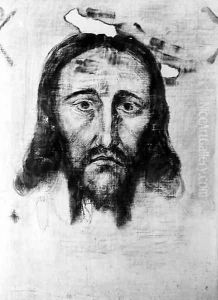Heaphy Paintings
Thomas Heaphy was an English watercolour portrait painter, born on December 29, 1813, in London. He was the eldest son of Thomas Heaphy Senior, who was also a notable portraitist. The younger Heaphy's artistic talent emerged early, and he was involved in the art world from a young age, due in part to his father's influence and connections within the artistic community.
Heaphy's early works were primarily watercolour portraits, and he quickly developed a reputation for his detailed and vivid depictions. His style was characterized by a rich palette and fine brushwork that captured the nuances of his subjects' expressions and attire. Heaphy exhibited at the Royal Academy and the British Institution, though he was never elected to the Royal Academy.
Despite his success as a portraitist, Heaphy's career took a significant turn when he traveled to Spain in 1834. There, he was inspired by the vibrant culture and the people, which led to a series of ethnographic and genre paintings. These works were a departure from his earlier portraits, demonstrating a broader interest in social realism and the human condition.
Returning to England, Heaphy continued to paint and exhibit his works, but he struggled to achieve the same level of acclaim he had enjoyed earlier in his career. Nevertheless, he continued to work until his later years, leaving behind a body of work that offers a compelling glimpse into the portraiture and social dynamics of the 19th century.
Thomas Heaphy died on October 4, 1891, in London. His works are part of various collections, including those of the Victoria and Albert Museum in London. Despite not being as widely recognized today as some of his contemporaries, Heaphy's contributions to watercolour portraiture remain significant, and his ethnographic works offer valuable insights into the cultures and peoples he depicted.
